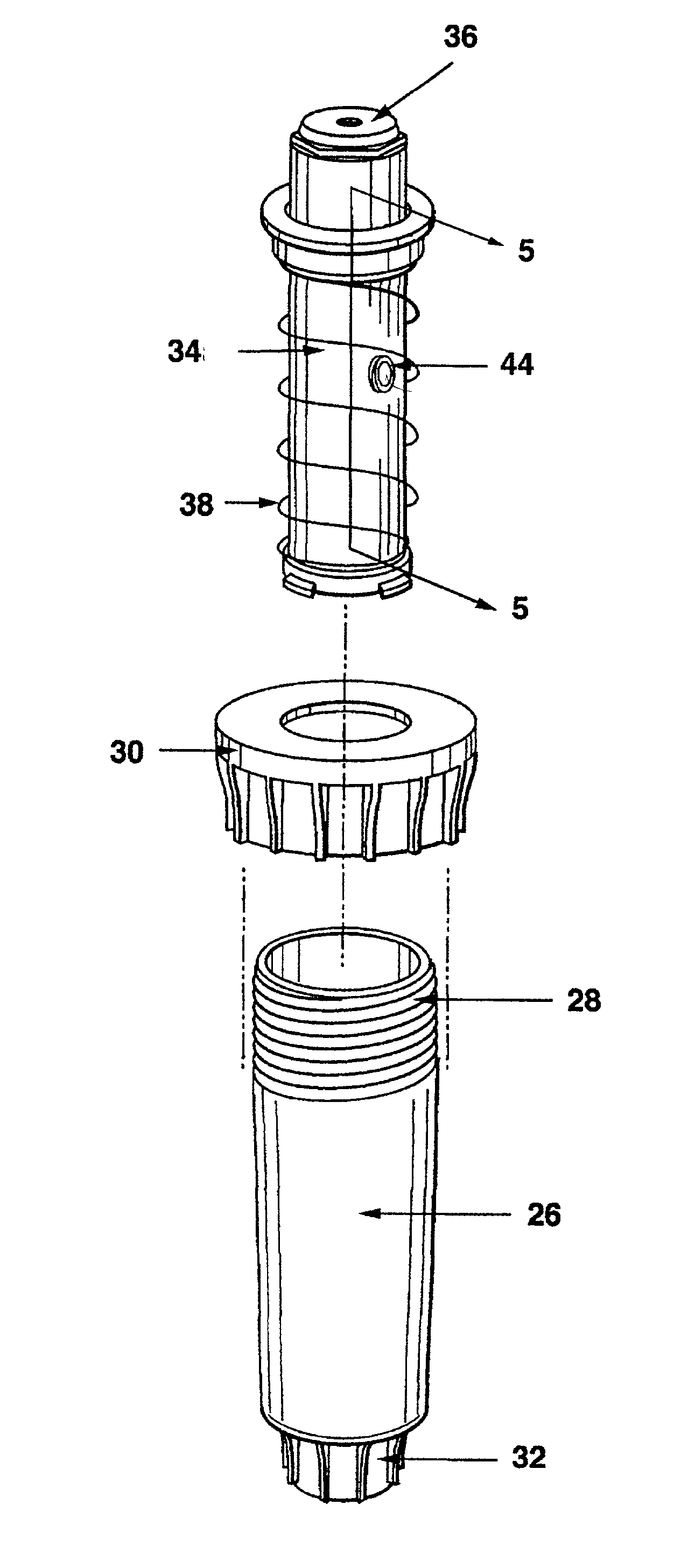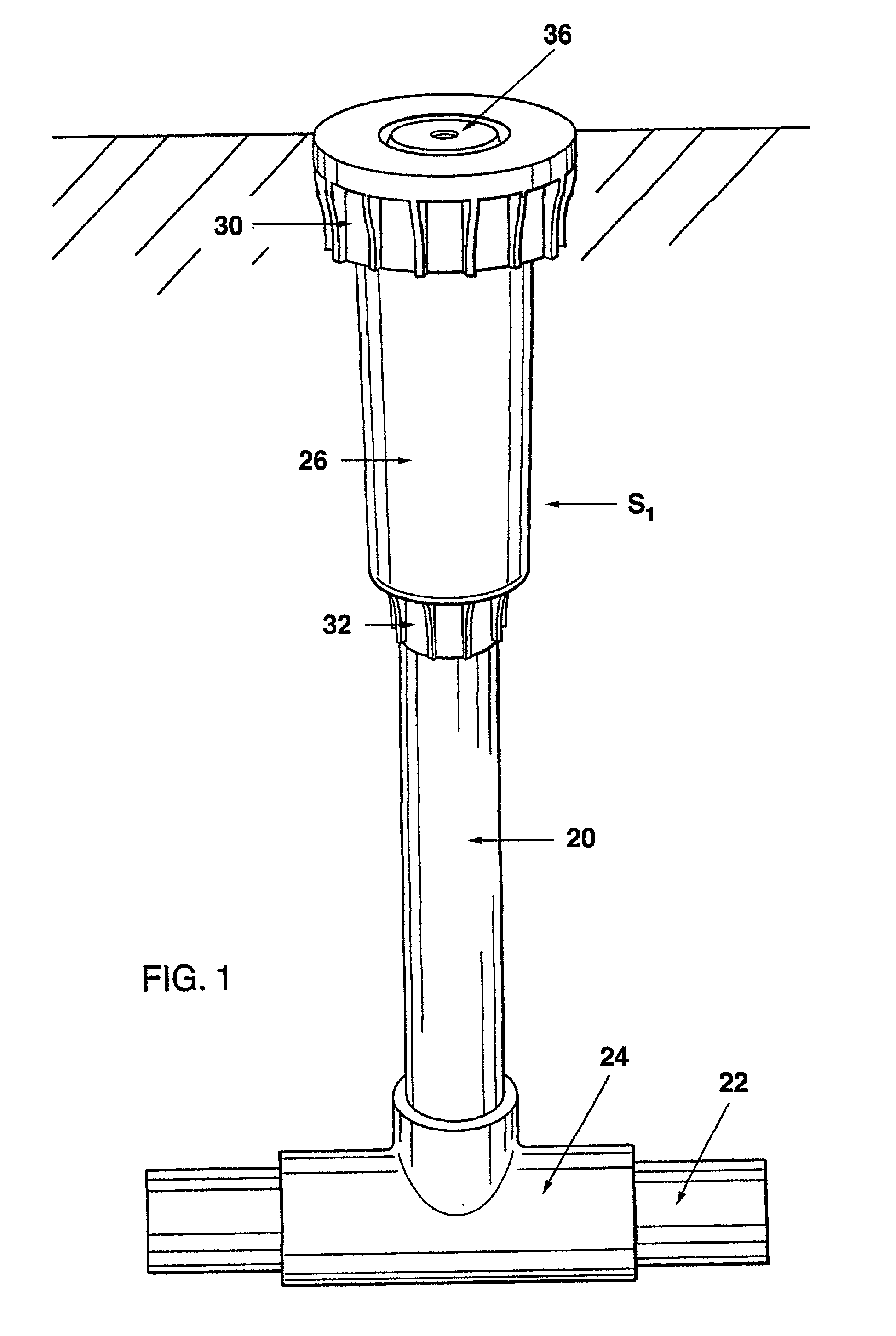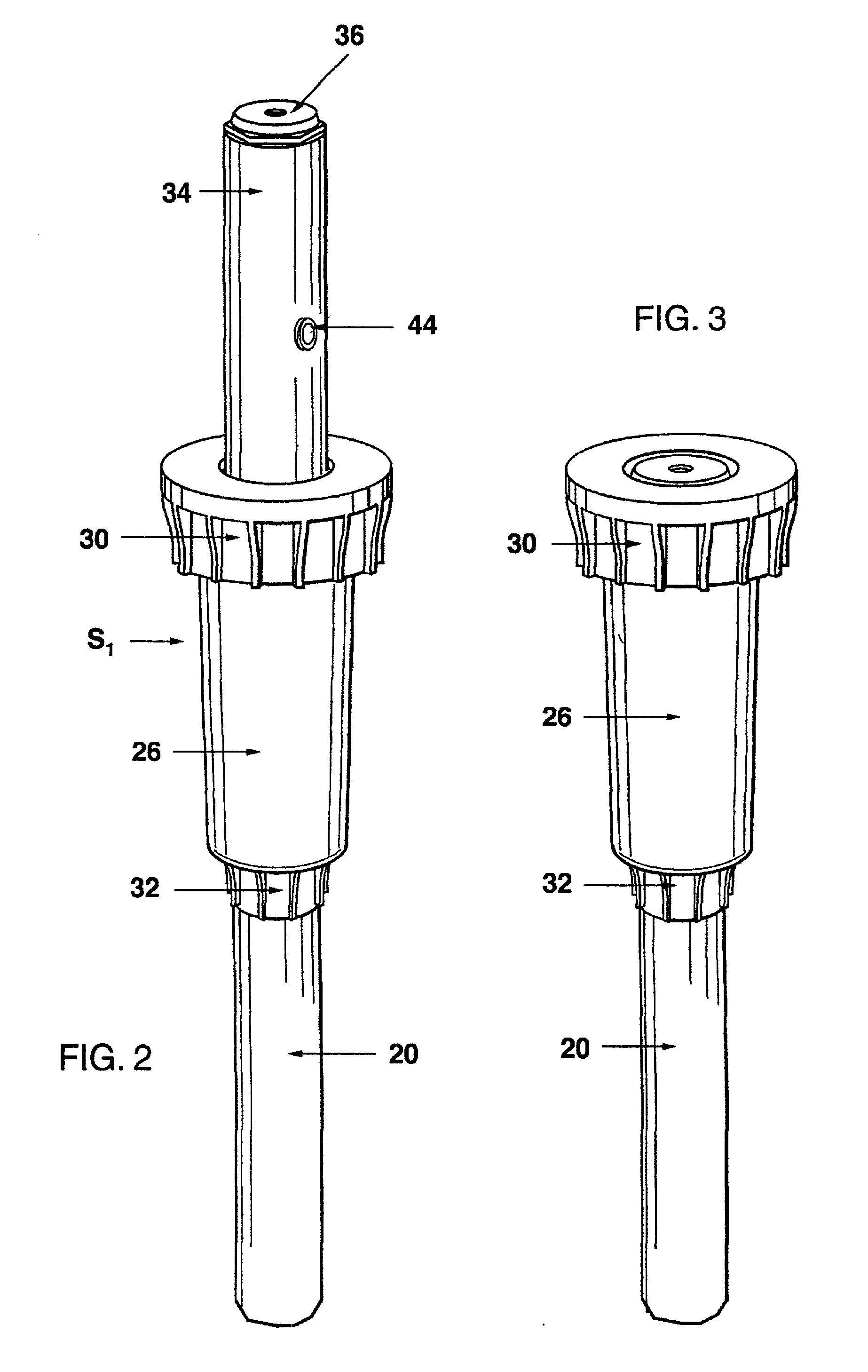This debris, left unchecked, quickly clogs up the orifices and nozzles of sprinkler heads rendering them unoperational.
The problem, is so ubiquitous that virtually every commercially available plastic sprinkler head, both domestic and foreign, is constructed with a built-in screen, or contains a removable screen, in order to filter out debris so as to avoid clogging the orifices of the nozzles and inserts.
However, inasmuch as the screen collects this debris contained in the delivered water, the screen necessarily requires periodic cleaning.
Insofar as removable screens are concerned, during maintenance operations, it is common for them to become lost or not be replaced due to oversight, which allows the debris to travel directly to the area of the orifices of the insert or
nozzle.
Even with screens in place, very small pieces of debris often get through the screen and bind together between the screen and the orifice to eventually clog up the orifice.
Sprinkler heads placed at
ground level also suffer clogged orifices due to small stones and insects entering the orifices from the area surrounding the heads and then becoming stuck within.
This cannot be accomplished with pop-up shafts, but only on stationary
shrub heads.
Also, a great deal of water is wasted in this manner.
In some cases, time clocks are installed inside of a locked building for which the
landscaping is provided, thereby interfering with proper maintenance.
As can easily be seen, a great deal of effort must be expended for cleaning out sprinkler heads where the valve or time
clock for the project may be located at a somewhat remote point from the sprinkler head being serviced.
At present, there is nothing available in the sprinkler head industry that provides for turning the
water supply on and off at the immediate location of the sprinkler head, upstream of the insert or
nozzle, in a manner which provides for complete flushing of the water passageway duct after removal of the insert.
This latter design comprises a large rotor-driven head for covering large areas and does not appear easily adaptable to small garden and planter-type sprinkler heads and ordinary insert-types of pop-up heads and cannot be applied to retrofittable fittings.
This product does not allow for the valve mechanism to be anterior to or upstream to the screen, even if the screen were moved to a location close to the
nozzle.
The aforesaid sprinkler head design also does not allow for thorough flushing of the water passageway duct anterior to the insert or nozzle area without an
expansive and time-consuming process of removing the gear driven rotor assembly located in the passageway chamber.
However, the nozzle-receiving cavity and adjusting mechanism is
machine-pressed into place and requires special tools for its removal.
Beyond the foregoing, there is no commercially available sprinkler head which allows for gradual shutting off the water to the insert or to an insert area which is valve-operated.
Further, no sprinkler head or pop-up shaft provides for thorough, unobstructed controlled flushing of the water passageway duct anterior to the insert or nozzle.
When debris clogs up those small holes, removal of the entire pop-up shaft becomes necessary to flush out the pop-up shaft.
Naturally, this requires shutting down the water supply to the entire
system.
This type of construction is difficult to use with ordinary stationary
shrub-type sprinkler heads.
It can be observed that the amount of the personnel hours lost in the pure physical act of walking back and forth can be quite substantial and necessarily adds to the cost of an
irrigation bill from the maintenance personnel or the like.
Moreover, it consumes a substantial amount of effort and, in some cases, frequently results in malfunctioning sprinkler heads not being cleaned and repaired as frequently as they would otherwise be repaired or cleaned.
In addition to the foregoing, pop-up sprinkler heads are much more complicated in their construction than are the so-called "shrub heads".
Other than the very top of the head, pop-up heads are completely buried in the ground making them more difficult to service.
However, in each of these cases, one could not remove the head or the insert of the head since there is no upstream point in proximity to the sprinkler head to
cut-off
water flow for a temporary period.
However, none of these sprinkler head types include any means to stop water flow to the insert at a nearby point upstream from the sprinkler head insert.
However, and here again, there is no means to
cut-off water flow to the head at a point adjacent to and upstream of the sprinkler head insert.
However, in the Fuller patent, the screw serves as a restrictor and only balances the amount of water which exits the nozzle of the head.
Notwithstanding, the device in the Fuller patent would not function to work as an off-on valve for temporarily allowing servicing of a sprinkler head.
The head, however, is a one piece sprinkler head such that there could be no facility for cleaning the head or changing any part of the head.
 Login to View More
Login to View More  Login to View More
Login to View More 


